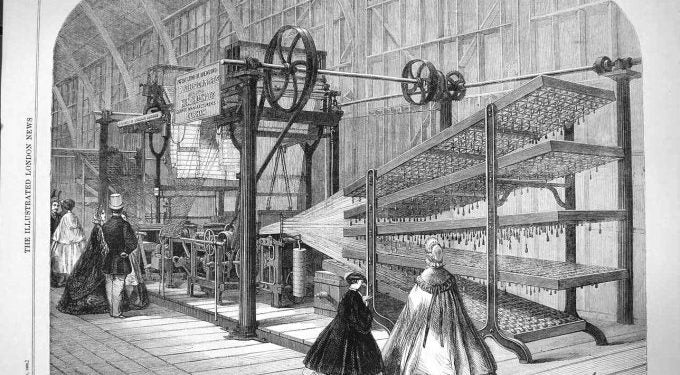Rugs and carpets have been enjoyed for thousands of years, but the timeline of how rugs were made in and the types of rugs that found their way to the United States make for an intriguing historical jaunt.
When the English started colonies in America, their rugs were made of woven wool and were large. The oversized looms used to create the rugs were brought by the British captains aboard their ships. Eventually, over many years, carpet mills popped up in many East Coast cities.
It was 1791 when William Sprague inaugurated the carpet industry in America by building a carpet mill in Philadelphia, Pennsylvania. As the industry grew and mills became more and more industrialized, the production of high-quality carpets expanded and citizens in most income brackets were able to purchase high-quality floor coverings that were being manufactured at a fast pace.
The tufted carpet, as we know it today, reaching from wall-to-wall, became popular during the turn of the 20th century in Dalton, Georgia. The carpets' evolution began in the form of handmade bedspreads in a little town in Georgia by the name of Dalton.

It was Catherine Evans Whitener, a young seamstress, who hand-sewed a bedspread to be given as a wedding present for a friend. She began with a quilt pattern and then added thick cotton yarn to the muslin fabric she was using. Because she wanted the bedspread to be luxuriously soft, she cut the ends of the threads to make soft tufts.
As years passed, her process became the go-to method for sewing bedspreads. In fact, families began to make the covers themselves in the Whitener style and were able to support their entire household with the money they earned from the sale of the spreads.
The bedspreads were so well-liked, people in large cities discovered the colorful and attractive bed coverings and began to buy them in large quantities. Because of the popularity of the spreads, some families living in Dalton were able to survive the Great Depression because of the steady income made from sewing and selling the stylish bed coverings.
Naturally, it was just a short time before machines were designed and set up to automate the tufting technique, followed by the building of mills in the city of Dalton and surrounding areas. Erastus Bigelow, in 1839, invented the power loom to be used for machine weaving carpet. Bigelow's loom doubled the rate at which rugs and carpets were produced in the first years it was in use. By 1850, production times were tripled. Visitors to the Smithsonian Institute can see the original loom. Bigelow received 35 additional patents between the years of 1839 and 1876. And he also introduced the first broadloom carpet in 1877.
The Jacquard mechanism power loom appeared on the scene in 1849 and was utilized first by the Clinton Company of Massachusetts to make Brussels carpet. After modification, the Hartford Carpet Company and the Clinton Company merged into what is now known as the Bigelow Carpet Company.
Because the tufting method had been sped up so dramatically, it was inevitable that new products soon were created by using the tufting procedure. After World War II, the wool and cotton yarn that had been used for tufting was replaced by synthetic fibers, such as acrylics, polyester, rayon, and nylon.
Currently, 90% of the market is made up of tufted, broadloom carpet made from synthetic materials. Dalton, Georgia has maintained its status of being the epicenter of the carpet market. Seventy percent of the world's carpet production, a $9 billion industry, takes place in Dalton. Yes, what began as a small town in Georgia is definitely the "Carpet Capital of the World" today.

